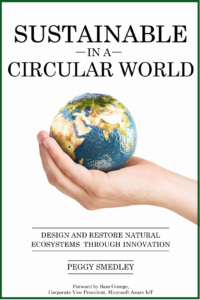Author: Connected World
Guidehouse Insights says the global market for commercial HVAC is estimated to grow to $52 billion by 2032.
Juniper Research says open banking use to surge, as open banking API calls will grow 470% globally by 2027.
Smart cities of tomorrow will drive connectivity, sustainability, and digitalization. MarketsandMarkets says the global smart cities market was worth $511.6 billion in 2022 and will reach just over a trillion dollars ($1,024.4 billion) by 2027. In sectors like healthcare, mobility, and hospitality, connected technologies will make all the difference. Specifically, technologies like AI (artificial intelligence) and ML (machine learning) will help bring smart-city projects to life in ways that leverage predictive analysis and realtime decisionmaking. A research paper that explored how AI helped enable smart cities and smart-city concepts between 2014 and 2021 found the sectors that leveraged AI the…
IDC says Asia/Pacific digital-native business tech spending from 2022-2026 will grow at a rate of 20.8%.
Gartner forecasts worldwide public cloud end-user spending will reach nearly $600 billion in 2023.
Incorporating new habits into our daily routines—such as eating—is the key to lasting change. Let AI (artificial intelligence) be your food coach—or at least that is what one company is suggesting, as it taps into the power of generative AI. myAir nutrition Coach is a “food for mood” personal nutritionist. The platform leverages devices, proprietary algorithms, and generative AI to measure, monitor, and alleviate stress. Analyzing physiological and psychological indicators provides advice tailored to each individual. A personalized nutrition plan will be created using realtime insights and bio-feedback. Here is how this can help: Enables the benefits of stress reduction…
ABI Research says Wi-Fi 7, 6 GHz spectrum allocation, and standard power certification to drive a 50%+ increase in wireless LAN access point shipments by 2028.
Guidehouse Insights says the market for zero emissions trucks and buses are estimated to grow at a rate of 23% by 2032.
A lot of people have played around with ChatGPT, GoogleAI, or Simplify and are curious about how it can make basic tasks, like writing, easier. While the media likes to focus on the negative aspects of AI (artificial intelligence), such as plagiarism, fake photos, or displacing workers, the focus should be on how AI can be applied to solving real business problems across industries. The restaurant industry is no exception. Unlike tech tools that roll out standalone solutions in areas like POS (point-of-sale), marketing, and inventory, the proposition that AI needs to be built into existing tools restaurants are already…
The trend toward walkable urban development is gaining momentum. A decade ago, the National Assn. of Realtors found 60% of people favor neighborhoods with a mix of homes and stores, and an Urban Land Institute survey revealed 50% of residents ranked walkability as either a top or extremely high priority. Today, Walk Score rates the walkability of U.S. addresses from zero to 100, and research shows every point of Walk Score adds $3,250—or 0.9%—to a home’s value. Historically, planners designed U.S. cities to be walkable, but after World War II, families purchased cars and made a break for the suburbs.…

